‘No man had ever a more glorious game to play & play’d it worse than he has done from first to last,’ wrote the Catholic priest Lewis Innes of his fellow Jacobite John Erskine, sixth Earl of Mar (1675–1732). In his lifetime, an irregular curvature of the spine earned the Scottish peer the nickname ‘Bobbing John’. Since his death in 1732, however, this unfortunate moniker has stood as shorthand for a multitude of sins. Twice anathematised – first by Scottish patriots for the part he played in the negotiations that led to a treaty of union with England in 1707, then by the Hanoverian ascendancy for repudiating that settlement and leading the Jacobite revolt of 1715 – Mar lived out his final years as a penurious exile, distrusted by other refugees from Whig vengeance and unable even to find a lasting bolthole in any of the cities of Europe.
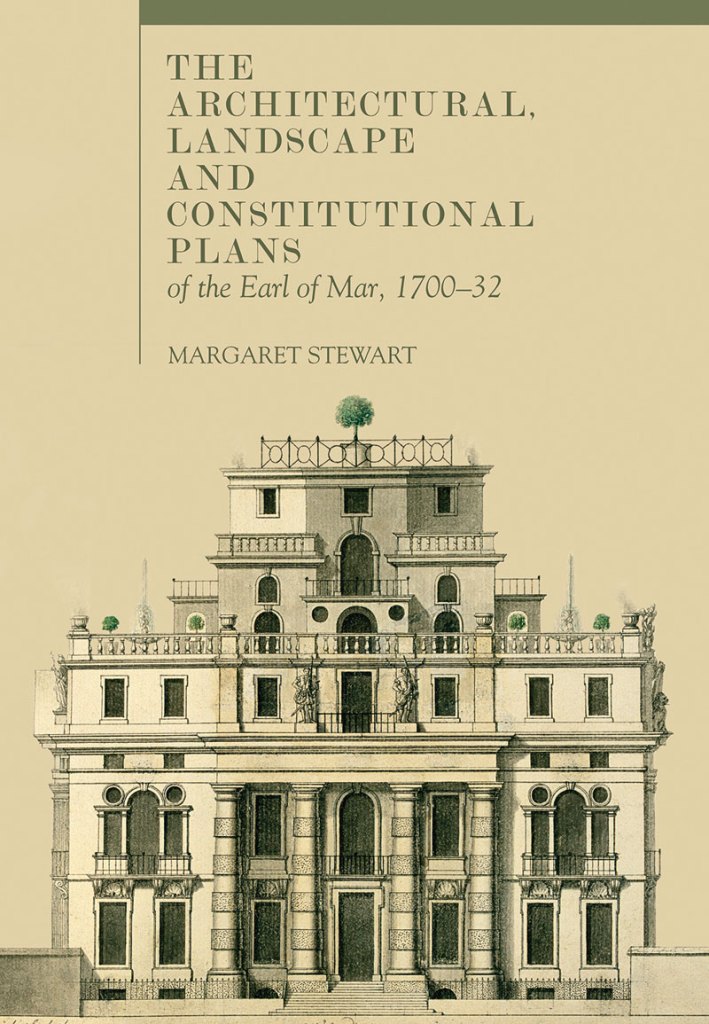 In this impressive feat of intellectual archaeology, Margaret Stewart sets out to redeem Mar’s reputation, not by reassessing his political career but by turning the spotlight on his ideas in the fields of architecture, landscape design, urban planning, and government. Stewart presents Mar as a substantial figure in the cultural development of Scotland, Britain, and the wider European continent. He was, she argues, a proto-Romantic, a progenitor of the Scottish Enlightenment, and a prophet of devolved government for the separate nations of the British Isles.
In this impressive feat of intellectual archaeology, Margaret Stewart sets out to redeem Mar’s reputation, not by reassessing his political career but by turning the spotlight on his ideas in the fields of architecture, landscape design, urban planning, and government. Stewart presents Mar as a substantial figure in the cultural development of Scotland, Britain, and the wider European continent. He was, she argues, a proto-Romantic, a progenitor of the Scottish Enlightenment, and a prophet of devolved government for the separate nations of the British Isles.
Mar was born in 1675, the heir to an illustrious title and a heavily encumbered estate. The family’s principal seat was at Alloa, beside the Firth of Forth in the Central Lowlands of Scotland. It passed to Mar in 1689 following his father’s death; in the years ahead it would serve as a test bed for his ideas and, during his unhappy peregrinations abroad, as a kind of Neverland on to which he projected ever more fanciful architectural visions.
Between 1702 and his disgrace in 1715, Mar transformed Alloa, creating a landscape incorporating avenues, kitchen gardens, ornamental terraces, orchards, waterworks, labourers’ houses, and a harbour. The scheme owed something to Versailles: Mar was aided by the architect and Episcopal cleric Alexander Edward, who had brought back plans and samples from his travels in France. But its genesis was altogether more practical and personal.
The Alloa project emerged from two related impulses. The first was to return the estate to profit through agricultural improvements and industrial developments, and thereby revive the fortunes of the Erskines. To this end, Mar concentrated on bringing back into use long-flooded coalmines and constructing a network of avenues to facilitate the transport of produce, goods and materials. The second was to fashion a panorama that immortalised his family’s part in Scotland’s past. The avenues radiating out from Alloa House were oriented towards Stirling Castle, of which the Erskines were hereditary keepers, and landmarks associated with Robert the Bruce and William Wallace. ‘Regeneration implies continuity,’ Stewart explains, ‘and the dynamic between the past and the present is a vital component of […] cultural survival.’ It was not for nothing that Mar chose as the legend for Alloa ‘Sic dominus coliut monumenta parentum’ (Thus has a lord cultivated the monuments of his forebears).
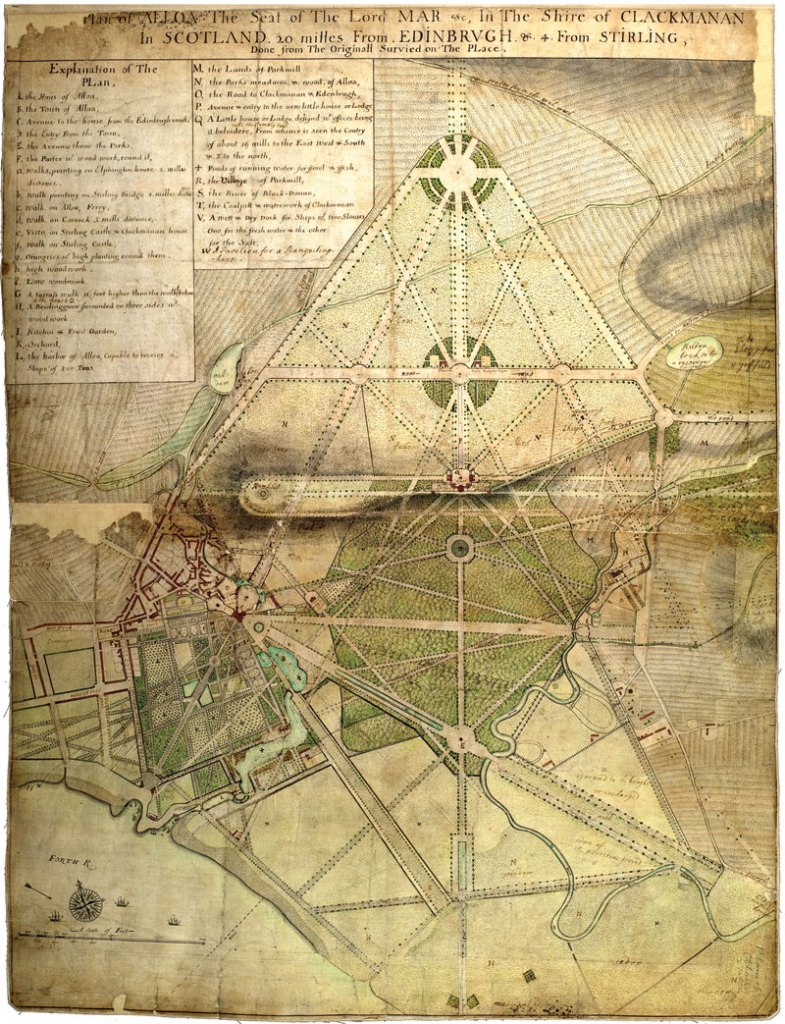
Survey plan of the Mar family estate at Alloa, designed in 1710 by John Erskine, sixth earl of Mar. National Records of Scotland; © HM Queen Elizabeth II, 2016
Mar’s project brought about a revolution in the estate’s fortunes; visitors were almost universally impressed. Alexander Raitt described Alloa’s ‘fine gardins…very much commented throw the kingdom’, while Sir David Dalrymple recalled how a party of female guests ‘spoke with delight of every thing but the filthy naked statues’. Jonathan Swift, Stewart claims, paid Mar the ultimate accolade by taking him as the model for the level-headed, reforming nobleman Lord Munodi in Gulliver’s Travels.
The patriotic instincts that Mar flaunted in his renovations at Alloa underlay his political activities. It was, Stewart argues, his conviction that merger with England would revitalise Scotland that drew him into the unionist fold. But when the expected benefits of union failed to eventuate, he abandoned the court – absconding from London in August 1715 disguised as a workman – and threw in his lot with the Jacobites. It was a disastrous decision: the revolt of which Mar was nominally leader rapidly unravelled and he was forced to retreat to France. His estates were forfeited to the crown.
Mar involved himself spasmodically in Jacobite intrigues during his long exile. Increasingly, however, he retreated into a world of his own creation, filling his time by designing new edifices for his Alloa estate and drawing up plans for public and private buildings elsewhere in Scotland, France, and England (among them an outline for reconstructing the fire-wracked house of Robert Walpole’s brother Horatio produced in the vain hope of obtaining a pardon). It would be easy to dismiss such schemes as no more than castles in the air – the products of a fevered, homesick imagination. Yet many of Mar’s activities had a more deliberate end.
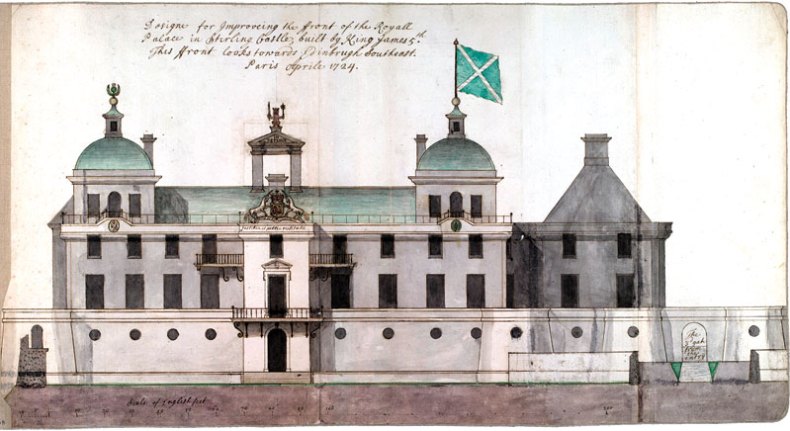
The Earl of Mar’s proposal for the south-east elevation of Stirling Castle. National Records of Scotland; © HM Queen Elizabeth II, 2016
As the Hanoverian regime solidified, Mar came to believe that a federation of England, Ireland and Scotland – each with its own capital and parliament – was the means by which the prosperity and self-respect of the individual nations of Britain could be secured. In the process, he sought to apply the principles that had underpinned his reforms at Alloa on a national scale. His blueprints for Edinburgh and London aspired not only to rationalise the two conurbations, but also to integrate historical and natural features into the cityscapes. Mar’s proposals for the Scottish capital anticipated the building of Edinburgh New Town in the second half of the 18th century.
Few of Mar’s projects materialised in his lifetime. Even so, Margaret Stewart has managed in this scholarly and generously illustrated work to produce a mental map of a man who sought, through architecture, to inspire a new political culture for the nations of Britain – a Don Quixote of the drawing board whose imaginings proved remarkably prescient.
The Architectural, Landscape and Constitutional Plans of the Earl of Mar, 1700–32 by Margaret Stewart is published by Four Courts Press.
From the May issue of Apollo: preview and subscribe here.
Unlimited access from just $16 every 3 months
Subscribe to get unlimited and exclusive access to the top art stories, interviews and exhibition reviews.

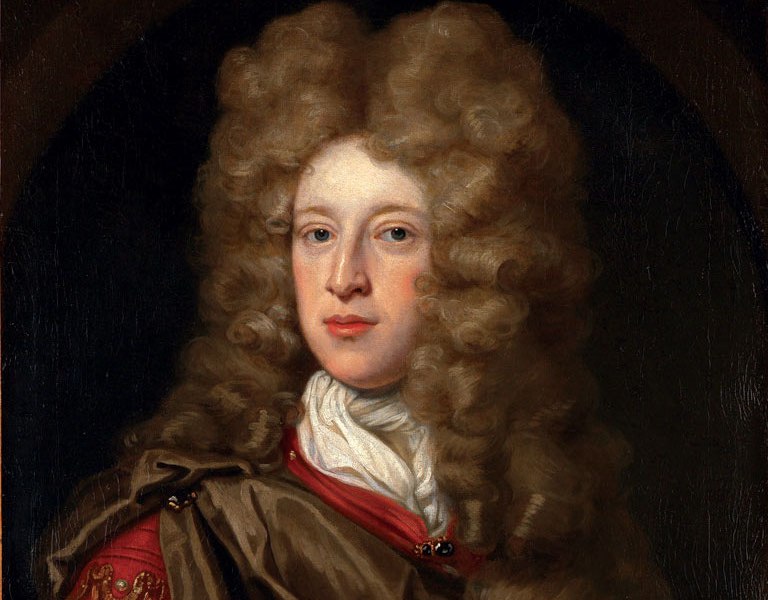
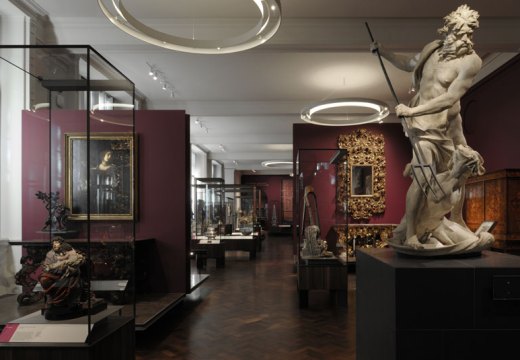
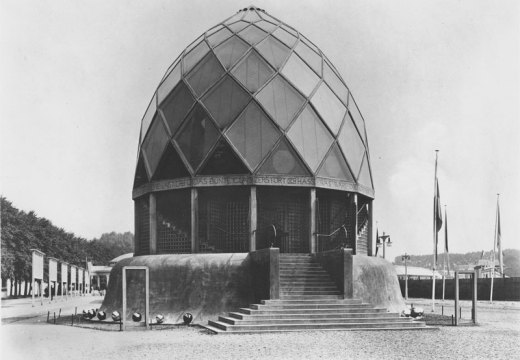










![Masterpiece [Re]discovery 2022. Photo: Ben Fisher Photography, courtesy of Masterpiece London](http://www.apollo-magazine.com/wp-content/uploads/2022/07/MPL2022_4263.jpg)
Why are fathers so absent from art history?